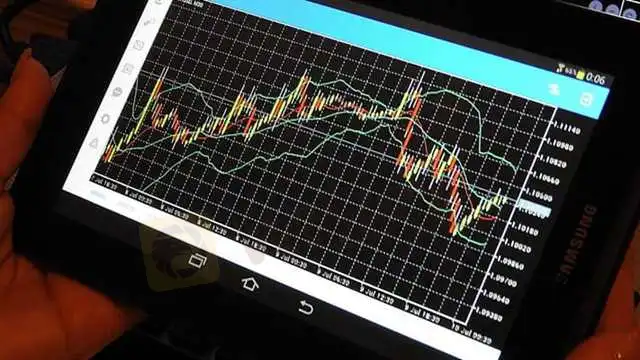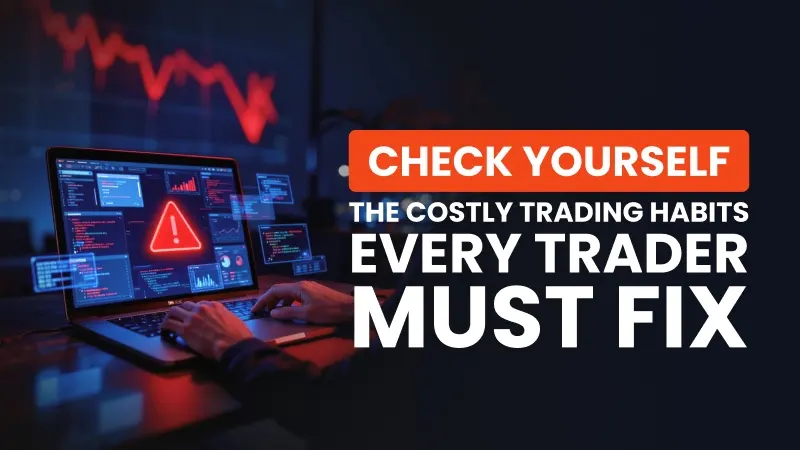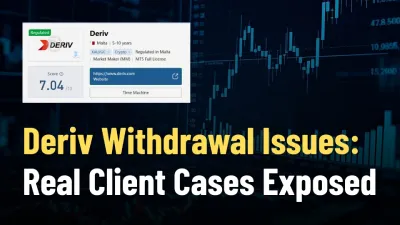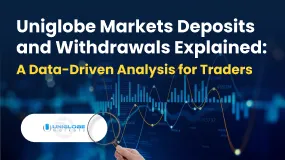简体中文
繁體中文
English
Pусский
日本語
ภาษาไทย
Tiếng Việt
Bahasa Indonesia
Español
हिन्दी
Filippiiniläinen
Français
Deutsch
Português
Türkçe
한국어
العربية
How to Trade with Long Term Forex Strategies?
Abstract:Many traders make trades several times a week, or even several times a day, but one style of trading that is often overlooked is long term trading.

In Forex, both short-term and long-term trading have advantages and disadvantages.
Although short-term trading such as scalping trading and day trading in forex are popular due to their reputation for fast profits, a long-term view is essential for correctly assessing data (technical analysis) and economic conditions (fundamental analysis). In this article, we will help you understand what is long term trading and guide you how to trade with long term forex strategies.
What is Long-Term Trading?
Long term trading or investing consists of using a combination of fundamental analysis and risk management to be able to keep your active trades open for long periods of time. This involves waiting for weeks or months to gain profit.
Long term trading relies on fundamental and technical analysis using daily and weekly charts. While most forex traders come to the market with a short term trading mentality and plan, long term strategies are a great way for traders to have much larger profits, and lower their risk, with the right strategy.
There are quite a few strategies that you can use in long-term forex trading, each with their own strengths and limitations. Here are some of the most popular ones that traders use today.
1. Trade the trends
Trend trading is by far the most potentially profitable forex trading technique, when correctly executed. Trend traders will usually start by identifying the major market trend and then wait for optimum market entry conditions.
You can use this strategy if only you are not new to the market. This is because trading the direction involves making future market predictions, which you can only make once you have been in the market for a long time. The investors who predict the market lows and highs wait for the price of the trading pairs to drop beyond the initial resistance point. This makes them to end up losing the opportunity which could have gained them profits.
2. Breakout confirmation
This is confirming the newly stating trends or breakouts so that you won't be easily get fooled by the illusory breakouts. The fake breakouts mostly take place when there is market anticipation of a new trend, but it fails to come in the same way it was anticipated to be. To keep this from becoming a problem, confirming breakouts is absolutely necessary. For this purpose, it is useful to master the Stochastics indicator and the Relative Strength Index (RSI) indicator.
3. Swing trading
Swing trading is the best long term strategy for beginner investors. This is because the strategy does not require any experience or discipline as the other strategies. In this strategy, you just have to detect spikes in the price chart then identify the resistance and support areas. Shortly after this, the price momentum will change as the level holds. This is precisely the moment where you should enter the market with your long-term trade. Typically, swing trades stay open for a couple of days, rarely extending for more than a week. Waiting for the swing that occurs over a few days usually brings bigger results than short-term day trades.
What're the Advantages of Long-Term Forex Trading?
1. Cost effective
When you trade on larger time frames, you take less trades, so you don't pay lots of commissions on trades. You don't get affected by the spread since it becomes indifferent on larger pip targets. In addition, you don not need to be in front of the charts for long periods of time, only a few minutes every day and letting the market do its movements. Less work from you will bring better results.
2. Effective market analysis
It is difficult and impractical to use fundamental analysis in short-term trading where the course of a trade is a few hours, or at most, days. Thus, short-term traders are usually limited to using technical strategies for analysis and strategies. Long-term traders, on the other hand, can choose to focus on fundamental or technical approaches while formulating their strategies, and the added dimension of flexibility does translate to greater insight and better profits in due time.
3. Less stress
Keeping distance from the charts will save you from emotional rollercoasters. You will get better setups and signals instead of messy markets from the smaller time frames
4. Avoid daily market swings
The forex market changes instantly. To speculate on those moves, one needs a strategy to avoid the daily swings that take you out. Long term strategy helps traders avoiding daily market swings.
5. Stop losses tend to work better on longer trades
On a short trade, once a stop loss is activated, the trade ends, resulting in losses. On a longer-term position, there is room for the market to experience short-term spikes and dips and then have the time to recover again with no stop loss trigger. The trade can then continue on its planned trajectory.
Long Term Forex Trading vs Short Term Forex Trading
The first and most obvious advantage of short term trading is that you will get your money quicker and you won't be holding the trades for long, so you will close them quickly and will get your profits quickly. But for long term traders, it can take a long time to wait for profits, from a day to months.
However, short term forex trading can be highly stressful if done over a long period of time, as you've probably discovered if you have any experience of forex trading, while long term trading can be less stressful due to the fact that you are not constantly needing to do anything such as watching the charts.
Overall both short-term and long-term trading have advantages and disadvantages and which one is right for you will depend on your own personality and time constraints. There is no harm in trying a number of different styles until you find the one that is right for you.
Conclusion
While most forex traders trade on a short term daily basis, long term forex trading offers great earning potential. This style of trading is ideally suited to people who want to trade forex but maybe have a full-time job so don't have the time to sit in front of a computer and monitor their positions all day. And while there is never a guarantee of success in trading, if you follow this guide and take your position seriously, you can enjoy a fruitful and long term ride in the forex market.

Disclaimer:
The views in this article only represent the author's personal views, and do not constitute investment advice on this platform. This platform does not guarantee the accuracy, completeness and timeliness of the information in the article, and will not be liable for any loss caused by the use of or reliance on the information in the article.
Read more

Check Yourself: The Costly Trading Habits Every Trader Must Fix
Are the trading habits you barely notice the very ones quietly destroying your profits, and could a single overlooked mistake be costing you far more than you realise?

Scandinavian Capital Markets Exposed: Traders Cry Foul Play Over Trade Manipulation & Fund Scams
Does Scandinavian Capital Markets stipulate heavy margin requirements to keep you out of positions? Have you been deceived by their price manipulation tactic? Have you lost all your investments as the broker did not have risk management in place? Were you persuaded to bet on too risky and scam-ridden instruments by the broker officials? These are some burning issues traders face here. In this Scandinavian Capital Markets review guide, we have discussed these issues. Read on to explore them.

Deriv Withdrawal Issues: Real Client Cases Exposed
Deriv exposed via client cases of withdrawal issues, 13‑month refund delays, severe slippage, and disabled accounts despite multiple “regulated” licenses.

Uniglobe Markets Deposits and Withdrawals Explained: A Data-Driven Analysis for Traders
For any experienced trader, the integrity of a broker isn't just measured in pips and spreads; it's fundamentally defined by the reliability and transparency of its financial operations. The ability to deposit and, more importantly, withdraw capital seamlessly is the bedrock of trust between a trader and their brokerage. When this process is fraught with delays, ambiguity, or outright failure, it undermines the entire trading relationship. This in-depth analysis focuses on Uniglobe Markets, a broker that has been operational for 5-10 years and presents itself as a world-class trading partner. We will move beyond the marketing claims to scrutinize the realities of its funding mechanisms. By examining available data on Uniglobe Markets deposits and withdrawals, we aim to provide a clear, evidence-based picture for traders evaluating this broker for long-term engagement. Our investigation will be anchored primarily in verified records and user exposure reports to explain the Uniglobe Mar
WikiFX Broker
Latest News
The 350 Per Cent Promise That Cost Her RM604,000
"Just 9 More Lots": Inside the Endless Withdrawal Loop at Grand Capital
GCash Rolls Out Virtual US Account to Cut Forex Fees for Filipinos
Garanti BBVA Securities Exposed: Traders Report Unfair Charges & Poor Customer Service
Private payroll losses accelerated in the past four weeks, ADP reports
INZO Commission Fees and Spreads Breakdown: A 2025 Data-Driven Analysis for Traders
Gratitude Beyond Borders: WikiFX Thank You This Thanksgiving
Core wholesale prices rose less than expected in September; retail sales gain
Consumer confidence hits lowest point since April as job worries grow
MH Markets Commission Fees and Spreads Analysis: A Data-Driven Breakdown for Traders
Currency Calculator



